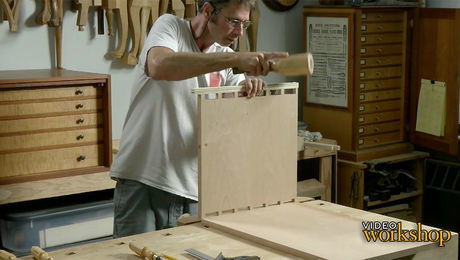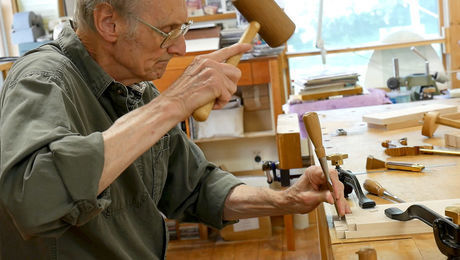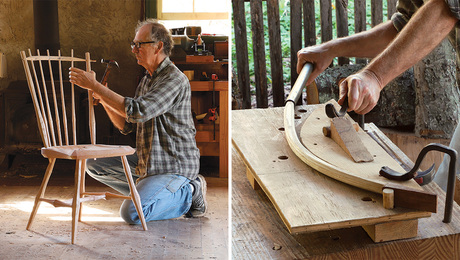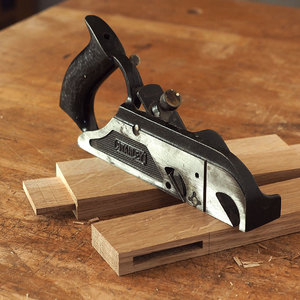Tenon fitting using a carbon transfer
Milk paint powder does a great job of showing where the tenons on this chair need some extra help.Fitting a mortise-and-tenon joint can be a frustrating endeavor. Most people know that you want to start with a too-tight joint, and then slowly remove wood from either the mortise or tenon until everything fits perfectly. However, when the joint goes together, the parts that bind are hidden from sight, and sometimes you’re left guessing which tiny bit of wood to pare away. If only you could Ms. Frizzle yourself in a Magic School Bus and see inside the joint!
Many Fine Woodworking contributors do the next best thing–the carbon transfer. Their methods vary. In his video workshop, Matt Wajda demonstrates how he applies pencil lines to his dovetail pins, and when he fits the two pieces together the high spots that are interfering with the fit transfer the graphite to the tail board. He pares away those high spots and tries again. Christian Becksvoort does the same in this video. Luthiers commonly use chalk or carbon paper to transfer high spots from one mating piece to another.
When Curtis Buchanan builds his “democratic chair”—a chair designed to be built by anyone, requiring very few tools—he creates tenons using only his drawknife. Since there is no jig or guide to aid him, the carbon transfer method allows him to sneak up on a perfect fit. In issue #294, instead of pencil marks, Curtis reaches for milk paint powder as his transfer medium. Since it’s a very fine powder packed with pigment, it leaves a clear mark. In the winter, Curtis has also been known to use another source of fine powder for his transfer medium–ashes from the woodstove.
 |
Finessing the Fit of Case Dovetails |
 |
Chris Becksvoort, the dovetail master at work |
 |
A simple Windsor part 2: Posts, spindles, and crest rail |




















Log in or create an account to post a comment.
Sign up Log in